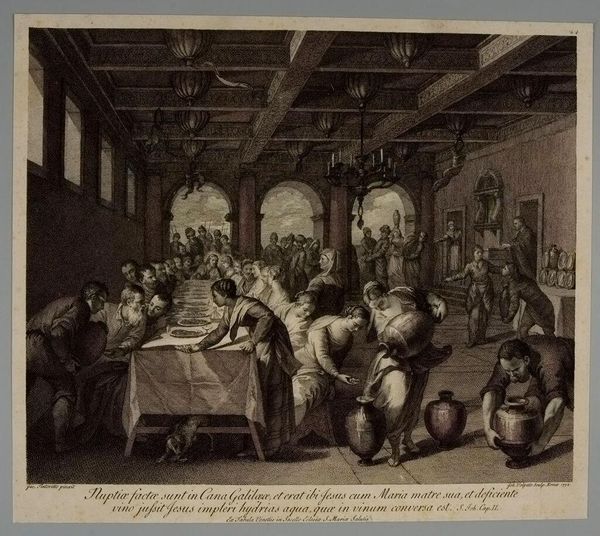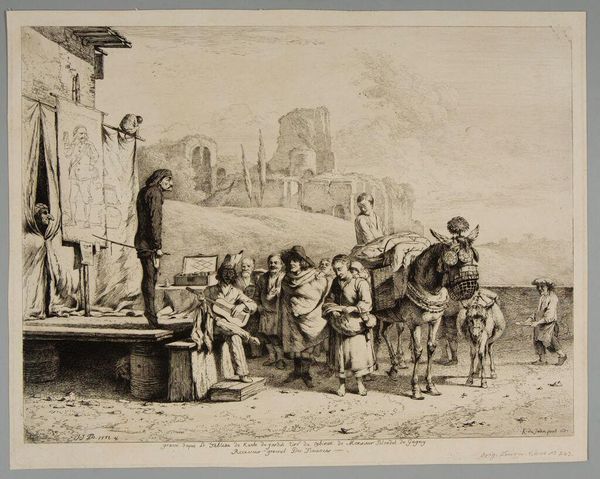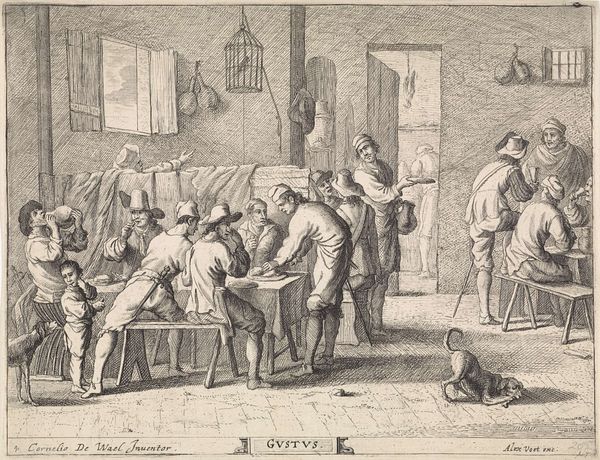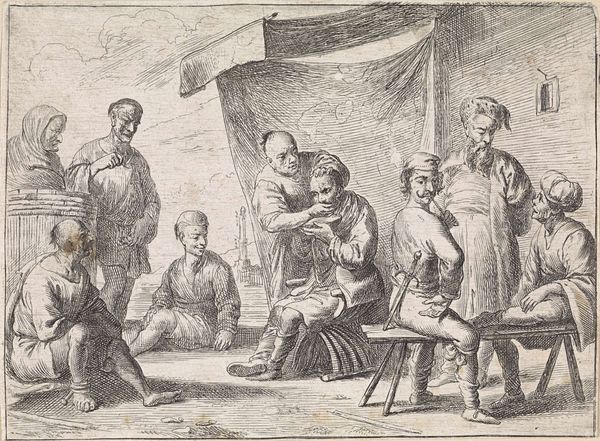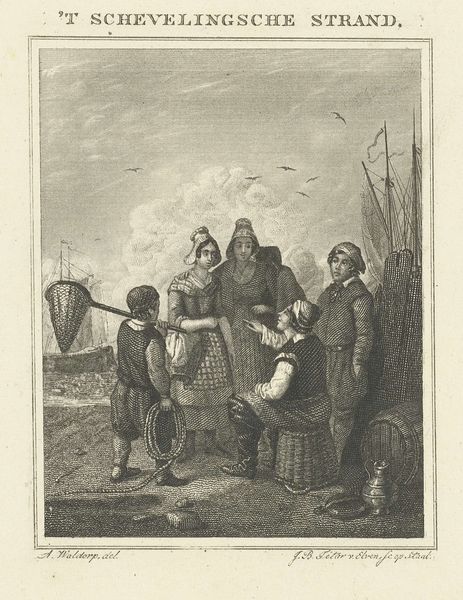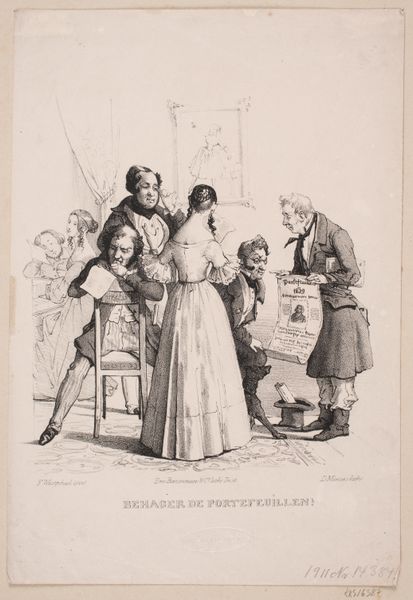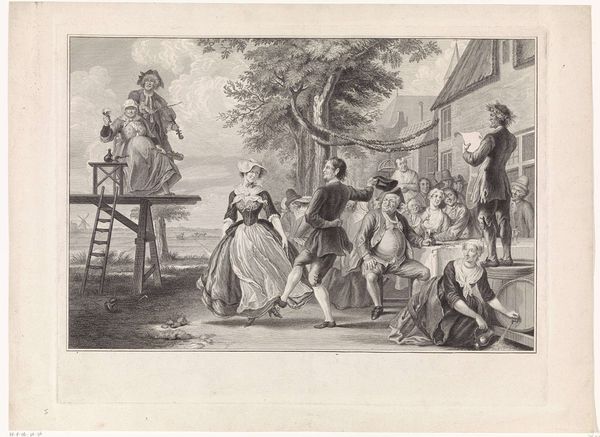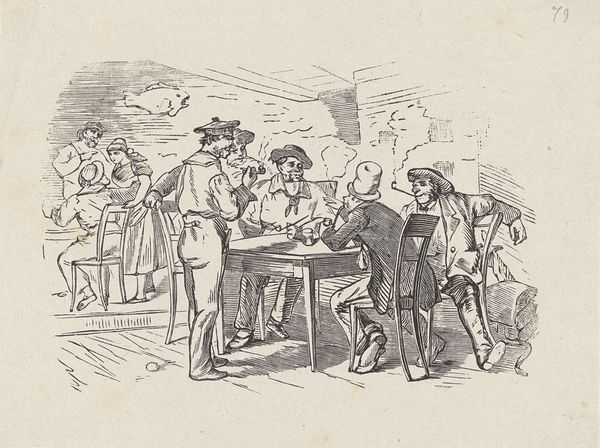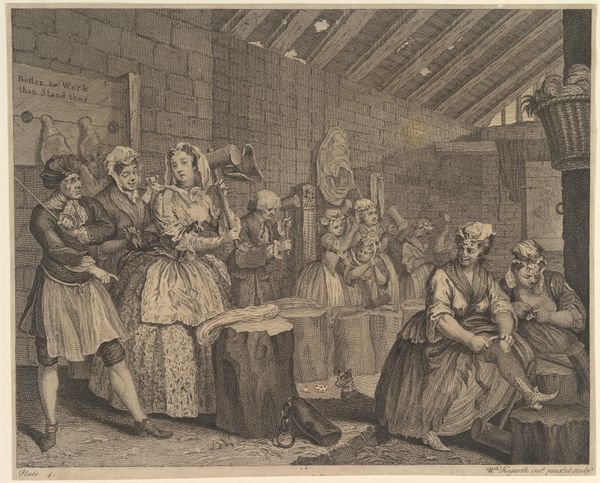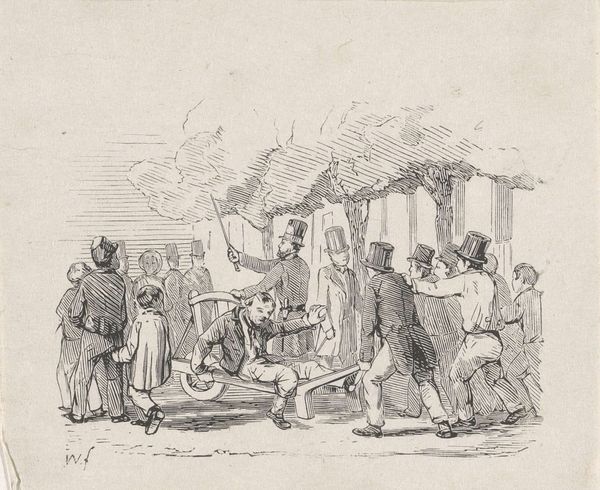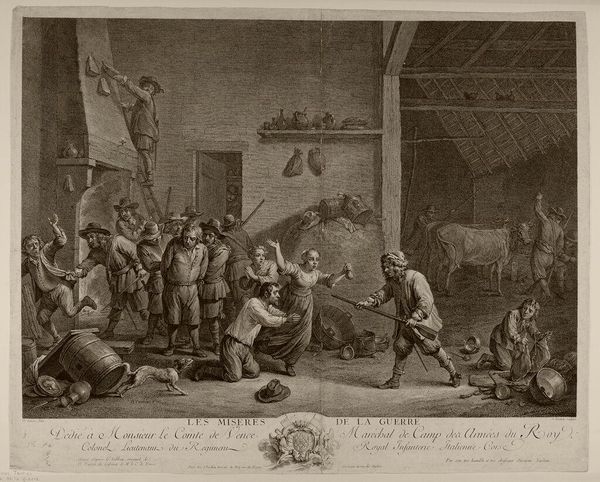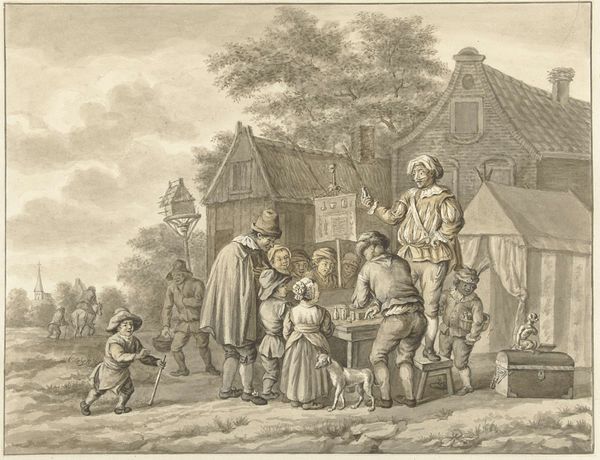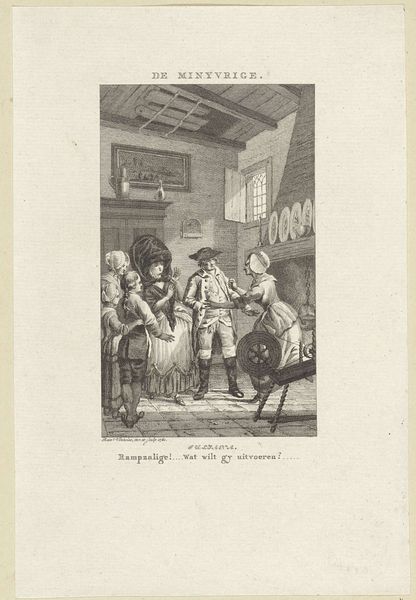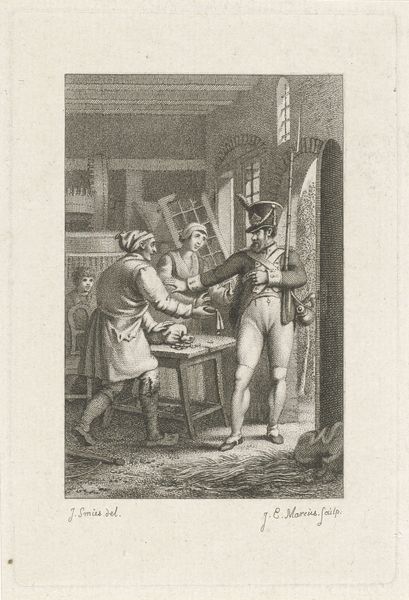
watercolor
#
portrait
#
oil painting
#
watercolor
#
portrait reference
#
romanticism
#
genre-painting
#
watercolor
#
realism
Dimensions: 20 x 26 cm
Copyright: Public domain
Editor: This watercolor by Saverio della Gatta, painted in 1823, is titled "The Neapolitan nougat seller." I'm really drawn to the depiction of everyday life, especially how the seller's wares are so meticulously rendered. How can we read this piece through its materials and social context? Curator: Indeed, a materialist lens draws attention to the nougat itself. Its presence points to networks of production and consumption. What ingredients were needed? Who harvested and transported them? How were these sugary treats made available to this public? Della Gatta compels us to consider class dynamics present in consumption. Editor: That's fascinating! So, looking at the seller's clothes compared to the customers', we can assume different economic standing? Curator: Precisely. The artist's application of watercolor as the medium reinforces that point. It’s relatively inexpensive compared to oil paints, which suggests a wider market. Watercolors allowed for multiples, suggesting accessibility for different patrons. Note the setting, is this intended for an aristocrat's cabinet, or a merchant’s portfolio? Editor: That really shifts how I see it. I was focused on the individuals depicted, but the materials used to *create* the image also say so much. It brings forth so many more socioeconomic questions than simply reading at face value. Curator: Yes, Della Gatta uses watercolor to explore the processes by which material culture is experienced. Now consider the social space… Where are the sources for pigments like ultramarine which may point to international markets? Editor: Thinking about it as a commodity, and considering the socio-economic implications inherent in watercolor paintings as opposed to oils changes everything! Curator: Right, from vendor to patron, it points to how material culture informs society.
Comments
No comments
Be the first to comment and join the conversation on the ultimate creative platform.
